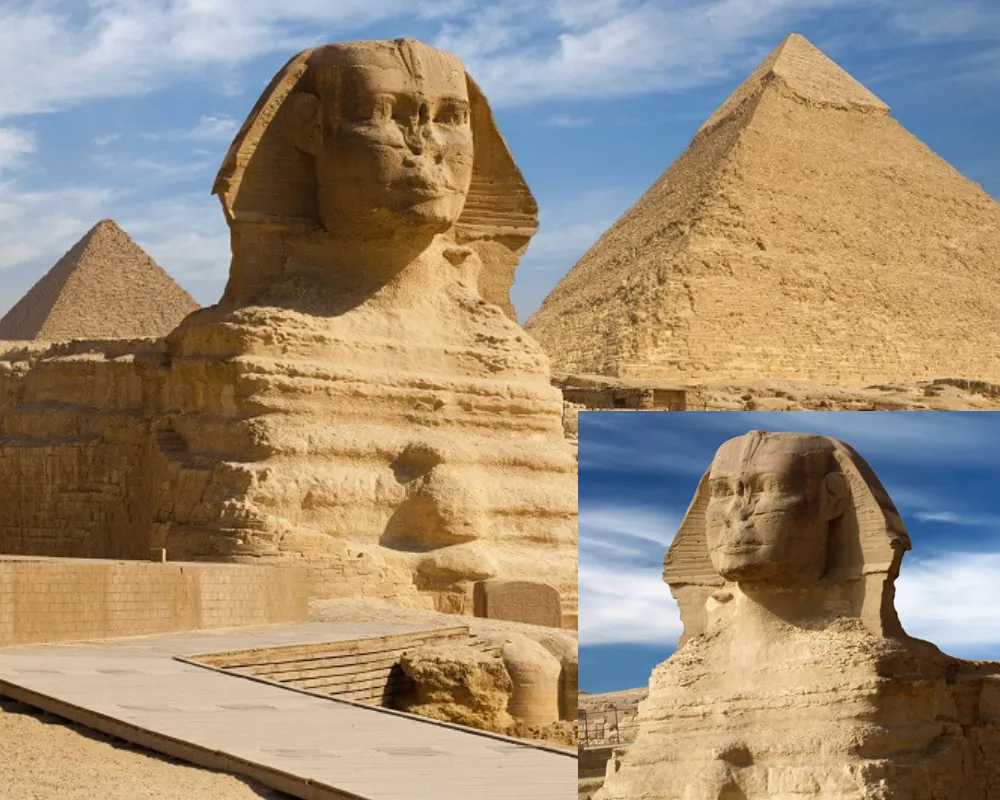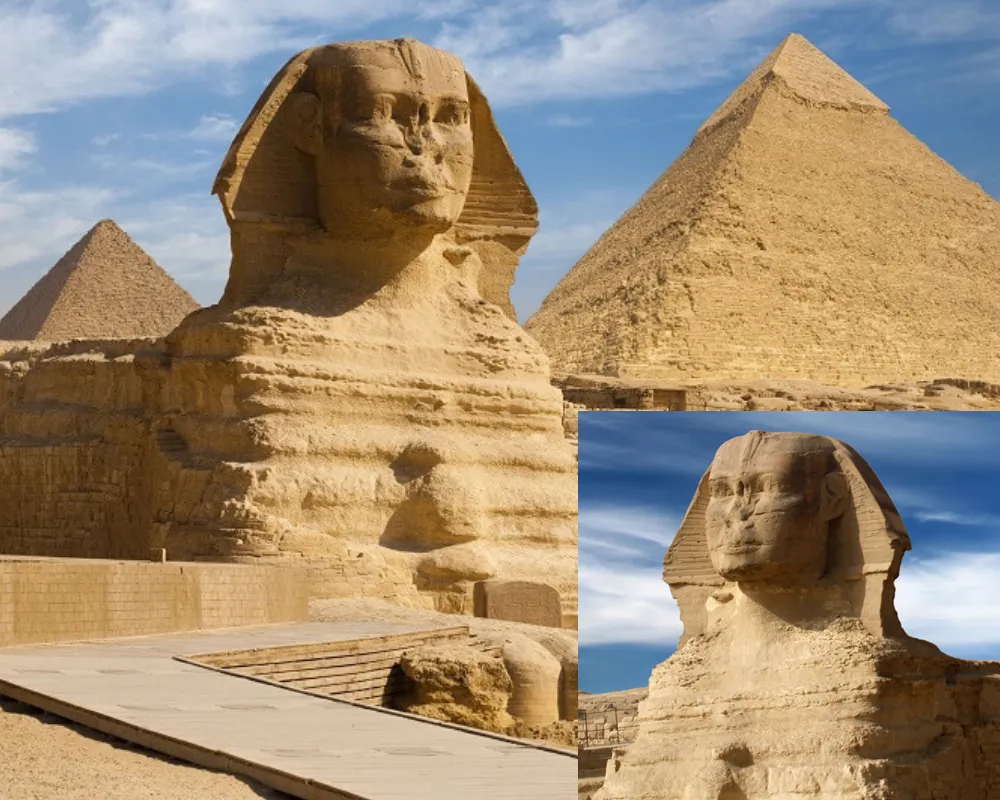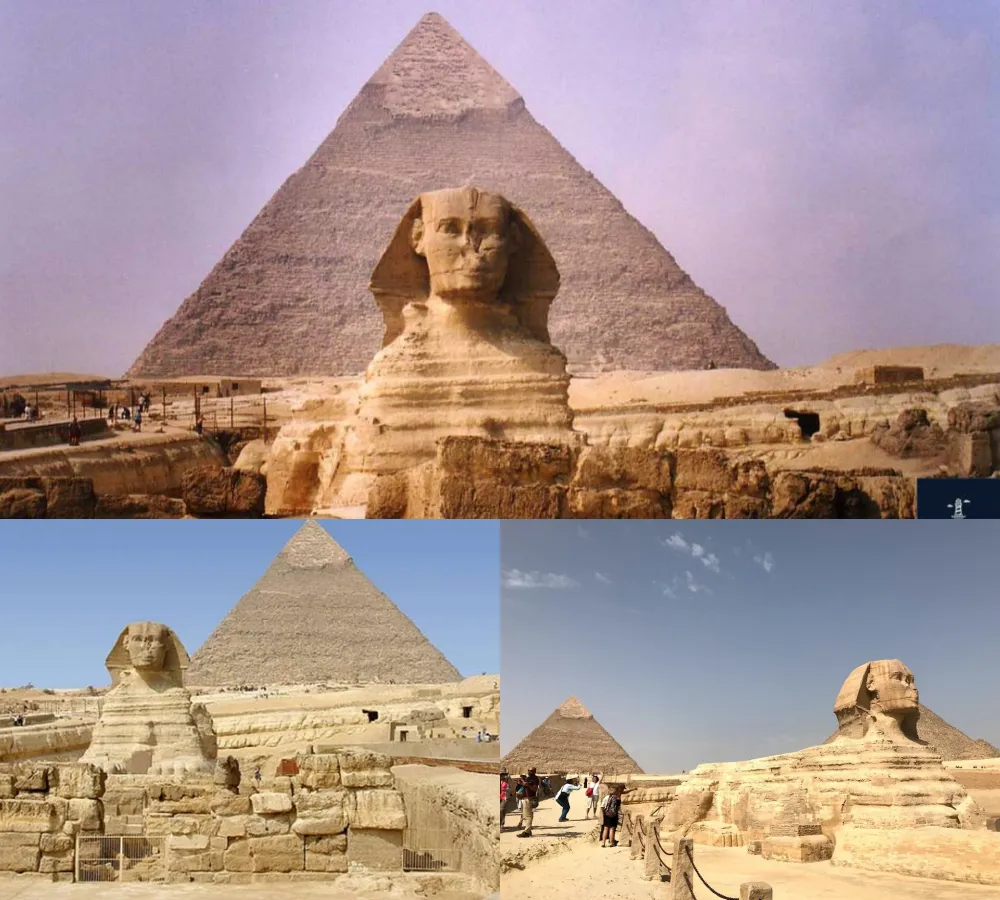
New Discovery: Was the Sphinx Really Man-Made?
The Great Sphinx of Giza, one of the great wonders of the ancient world, has fascinated scientists and archaeologists for centuries. Standing 20 metres tall, the Sphinx is remarkable not only for its size but also for the mystery surrounding its origins. Now, a shocking study has suggested that the Sphinx may not be entirely man-made.

The Sphinx of Giza: An Ancient Wonder
The Sphinx of Giza, with its distinctive lion’s body and human head, was carved from limestone some 4,000 years ago, during the 4th Dynasty of ancient Egypt. This is no simple sculpture; it was carved directly from a massive block of limestone, weighing an estimated 20,000 tonnes. This massive structure stands in front of the Giza pyramids, acting as a great guardian for the structure.
New Discovery: Nature’s Role in the Sphinx’s Form
A recent study published in the journal Physical Review Fluids by scientists from New York University has put forward a shocking hypothesis: nature may have done most of the work in shaping the Sphinx. According to the study, weathering by wind and sand may have created a shape similar to the Sphinx.
The scientists used electronic models and laboratory experiments to demonstrate that weathering can transform limestone into a shape similar to the Sphinx. This process, called yardang, is the result of wind erosion, creating strangely shaped rock outcrops, often found in desert environments.
Natural Forms That Inspire Humans
Research shows that, under certain conditions, natural elements can create stone shapes that resemble the Sphinx. Researchers simulated this process by placing a mound of clay under running water, which created a shape similar to the Sphinx in just a few hours. This suggests that the Sphinx’s unique shape may have existed naturally, inspiring ancient Egyptian architects to refine and clarify its shape.

Yardangs on Other Planets
The research findings not only shed light on the origins of the Sphinx, but also open up new insights into **yardangs** on other planets. Similar shaping processes have been observed on Mars, Venus, and even on Titan, Saturn’s moon. These findings help us better understand how environmental factors can shape stone structures on distant worlds.
The Great Sphinx of Giza, with its magical combination of natural and man-made elements, continues to be one of history’s great mysteries. This research not only helps to clarify the origin of the Sphinx, but also opens new doors for the exploration of geological phenomena on other planets in the Solar System.






